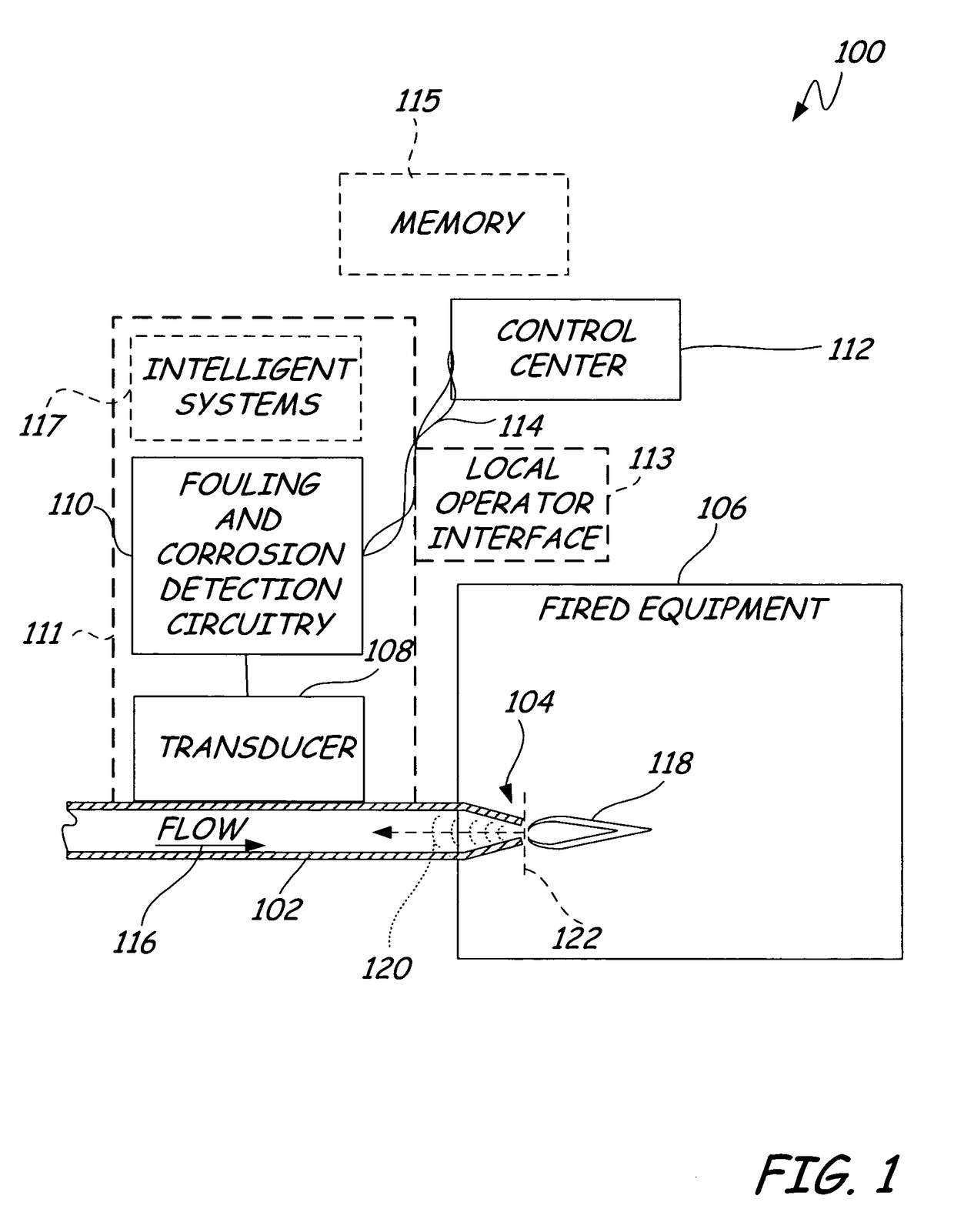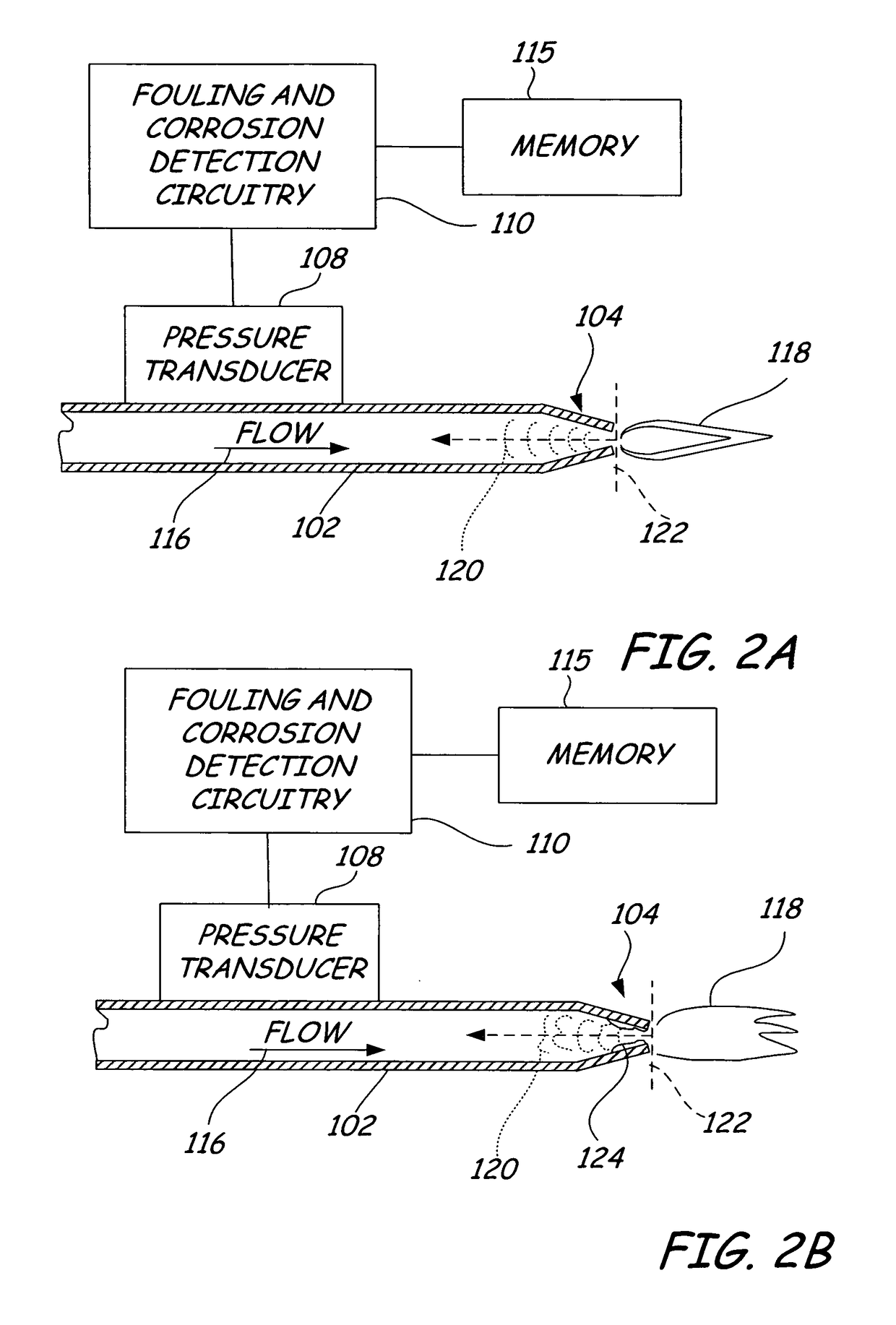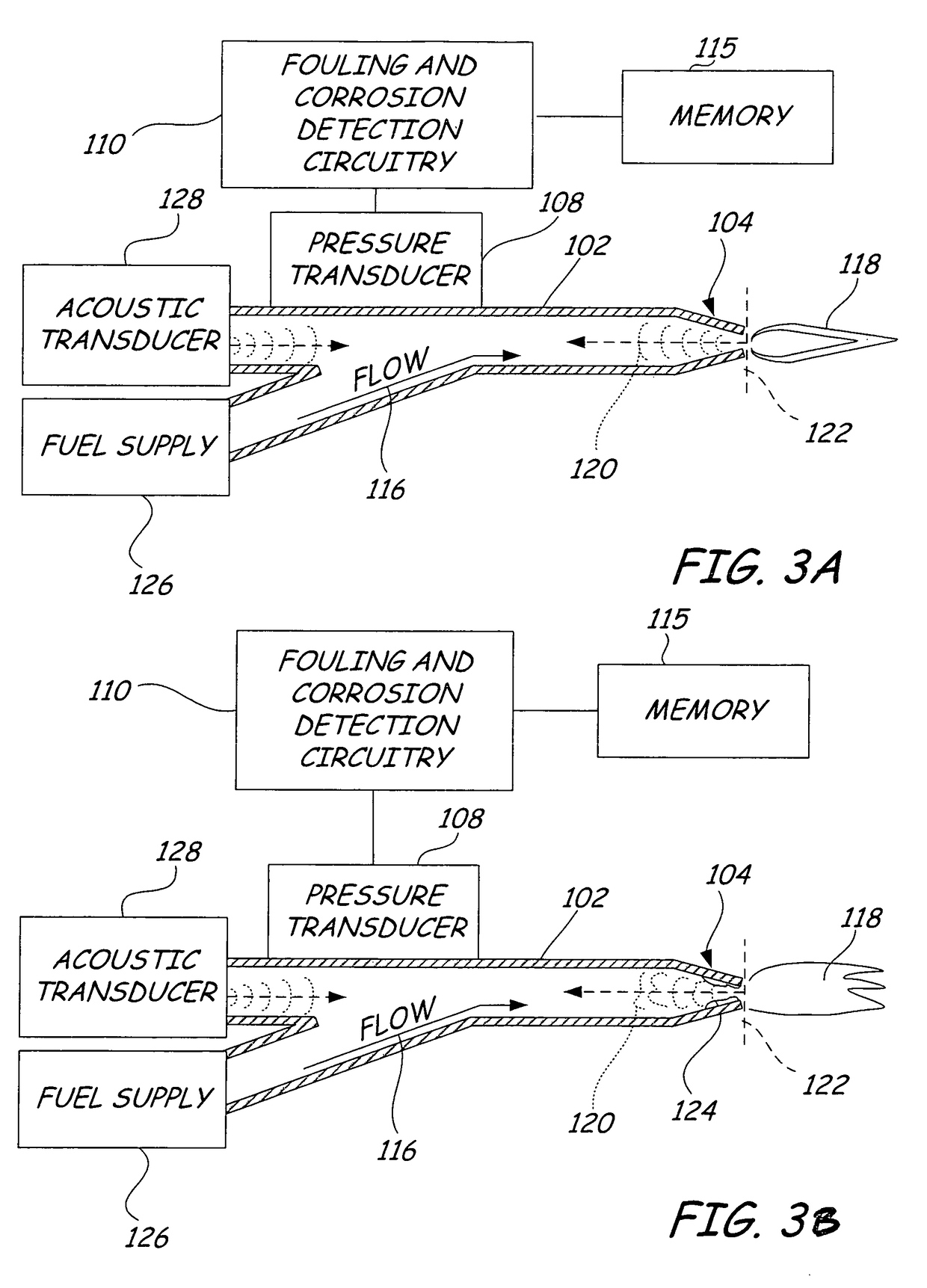Fouling and corrosion detector for burner tips in fired equipment
a burner tip and detector technology, applied in the field of combustion systems, can solve problems such as system failure, burner tip or nozzle fouling or corrosion, and process that uses fired equipmen
- Summary
- Abstract
- Description
- Claims
- Application Information
AI Technical Summary
Benefits of technology
Problems solved by technology
Method used
Image
Examples
Embodiment Construction
[0014]Generally, fluids flowing within a pipe or conduit produce detectable acoustic signals as the fluid contacts the walls of the pipe. Adjacent to narrowing or obstructive elements within a pipe (such as a venture tube, a burner tip, and the like), the changing inner diameter of the pipe cause acoustic reflections, which are detectable upstream from the narrowing or obstructive element. For example, as fuel flows through a burner tip, the fuel flow through the narrowing flow path causes an acoustic reflection substantially opposite to the direction of flow. Typically, this acoustic reflection can be considered as an acoustic signature, which varies with flow rate. However, this acoustic reflection or signature changes as fouling or corrosion effects the narrowing or obstructing element. Both fouling (buildup of undesirable material on the surface) or corrosion (pitting or erosion of surface material) cause a change in the profile of the obstructing or narrowing element, resulting...
PUM
| Property | Measurement | Unit |
|---|---|---|
| fouling | aaaaa | aaaaa |
| corrosion | aaaaa | aaaaa |
| pressure | aaaaa | aaaaa |
Abstract
Description
Claims
Application Information
 Login to View More
Login to View More - R&D
- Intellectual Property
- Life Sciences
- Materials
- Tech Scout
- Unparalleled Data Quality
- Higher Quality Content
- 60% Fewer Hallucinations
Browse by: Latest US Patents, China's latest patents, Technical Efficacy Thesaurus, Application Domain, Technology Topic, Popular Technical Reports.
© 2025 PatSnap. All rights reserved.Legal|Privacy policy|Modern Slavery Act Transparency Statement|Sitemap|About US| Contact US: help@patsnap.com



